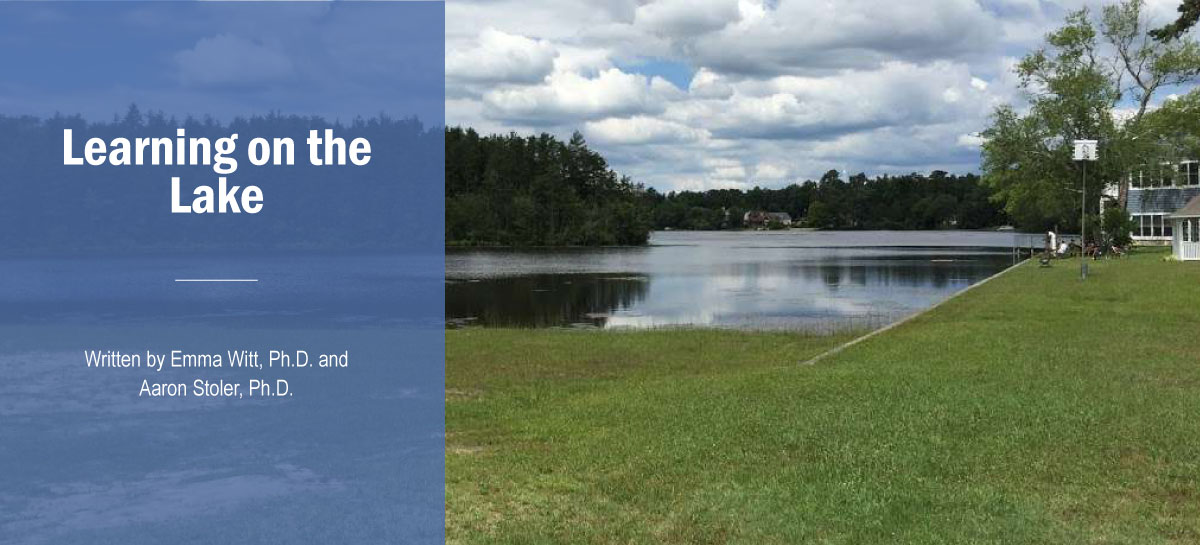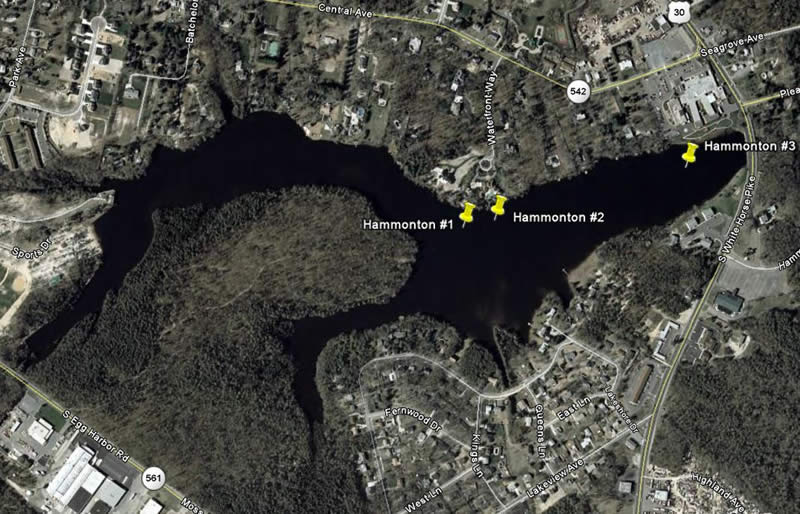Learning on the Lake
Fall 2021 Issue

Hammonton Lake, New Jersey. Photo credit: Adam Krell.
In the field of Environmental Science, education is frequently hands-on and a little muddy. When Dan Bachalis, chair of the Hammonton Lake Water Quality Advisory Committee, reached out to Stockton for student help addressing issues at the lake, the Stockton Environmental Science program saw an opportunity for valuable student learning.

Photo credit: NJ.gov
Hammonton Lake is one of the gems of Hammonton. For many years, the Hammonton Lake Water Quality Advisory Committee conducted regular lake testing to monitor the health of the lake. Along the way, lake managers have seen elevated levels of E. coli and a lot of extra vegetation growth, and the township is interested to know the causes of these issues and how they might curb future problems.
“I enjoy any opportunity for our students to gain experience working with stakeholder groups to identify and solve problems”, said Emma Witt, associate professor of Environmental Science. “It mirrors what they will be expected to do post-graduation.”
To identify potential causes of the lake’s issues, ten Environmental Science students worked with a team of four professors to complete independent study projects in Fall 2020. The student team led by each of the professors attacked the issues from a different angle. Witt’s hydrology team, with the support of Jeff Webber (Geology), regularly went to the lake to take a variety of water quality tests and worked with the township’s wastewater treatment plant to analyze E. coli concentrations. Weihong Fan’s GIS team conducted geospatial assessments of pollutant sources. Aaron Stoler’s ecology team took a boat onto the lake and dove into the water to survey plant and macroinvertebrate populations.
The research has continued beyond the fall. The Spring 2021 semester brought opportunities for Witt’s Professional Science Masters class (ENSC 5201: Watershed Management) to use the lake as a learning tool throughout the semester. The class developed a watershed characterization, modeled the impact of changes on stormwater runoff, and assessed the current status of the lake from a water quality perspective. The class was invited to attend a meeting of the Water Quality Advisory Committee via Zoom, during which their work was presented. Three Environmental Studies students continued the water quality sampling this summer.
“As we uncover more and more details about the lake, more questions arise,” stated Stoler. During his macroinvertebrate surveys, his team found evidence of invasive Asian clams and banded mystery snails. “We are currently conducting an experiment to test how the presence of these invasive organisms might affect lake quality.”
His team, led by graduate student Carly Conticchio, is examining how the presence of these invasive organisms might interact with nutrient pollution to alter the abiotic and biotic conditions of the lake. “We don’t have answers yet. Science takes time,” says Stoler, “but we are working diligently to understand this lake.”
“I remain excited by the opportunities at Hammonton Lake going forward. Any chance we have to provide students with these types of learning opportunities, particularly with the year of COVID learning, is valuable to us,” said Witt.



